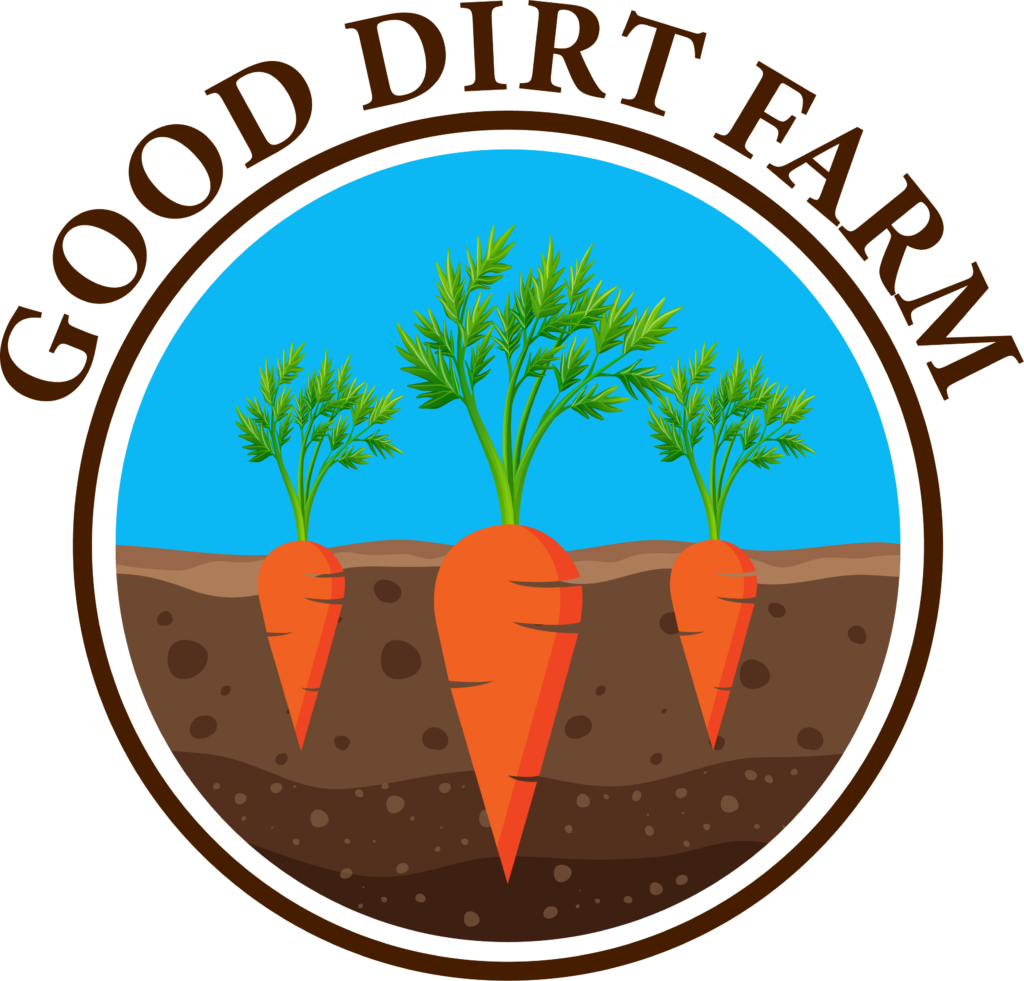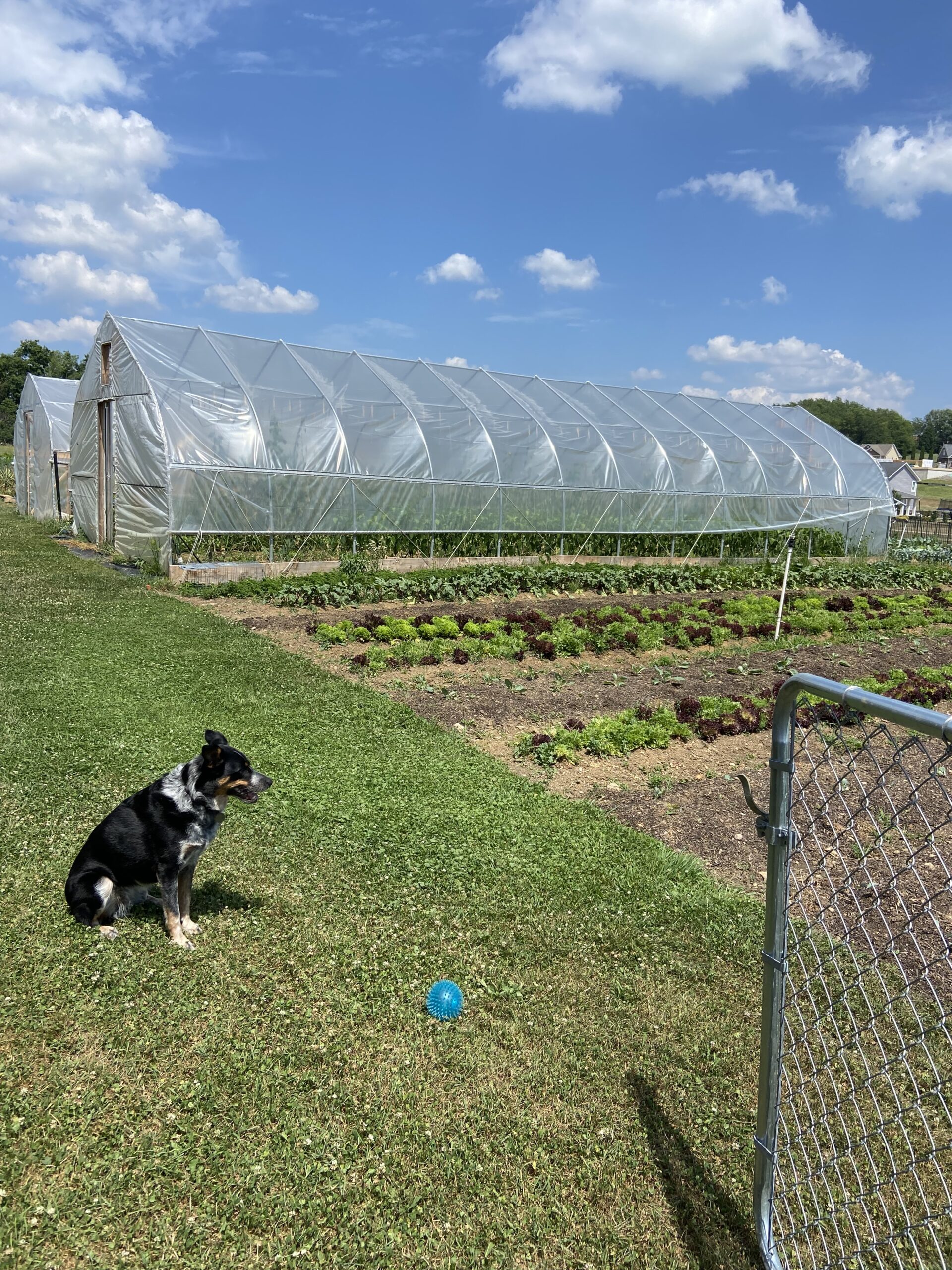Hey everyone, we’re back! As you might guess, the summer months are a busy time for a farmer, and our blog has suffered as a result. As winter kicks into full swing here in western PA, I’m writing to give you all some of the highlights and themes of our first summer fully in production. Lets do it!
A Bit Dry for My Taste
If you were outside at all this summer, you may have noticed that it was hot. We’ve had more days with temperatures above 90 than we have in several years. The heat provides many challenges for vegetable growers, but I wouldn’t call this year’s summer heat my main climactic challenge. That prize goes to none other than drought!
From June through October, rain has been hard to come by. Lawns have browned out, creek beds are dry, and our water bills have been sky high! For me, the biggest challenge the drought brings is direct seeding and transplanting.
We had several beds of carrots, beets, and turnips germinate quite poorly simply because our irrigation couldn’t keep the soil moist enough through the heat. Similarly, young transplants of Brussels sprouts and cabbage took a big hit when they were put out into dry fields.
While the drought is challenging, it taught me a ton about the finer details of irrigation. The big takeaway is that not all irrigation is created equally! Most of my established plants hardly know there is a drought, and certainly don’t need constant soil moisture. On the other hand, newly transplanted seedlings and newly sown seeds need more water than I previously thought.
The Top Performers
Let’s touch on the best crops we’ve grown this year so far, both in terms of production and also how they’ve done at the market and with our CSA.
Some of the most prolific growers have to be yellow squash, romaine lettuce, parsley, sage, basil, and cherry tomatoes. The yellow squash has to be called out specifically because it is almost unfathomable how many squash they produced. Unfortunately, this was far more than I (or really anyone) could ever sell.
Some of my best-reviewed and most sold items definitely surprised me. While things like lettuce and carrots definitely proved to be excellent crops for market, others like radishes, green beans, and beets were a surprise hit. These were some of the crops that have sold out every single time!
Understanding production and marketability help me make better plans for next season. Growing more or less of specific crops and adjusting the planting schedule to have a more or less consistent harvest are definitely things I’ll be doing this winter!
The Pests
One of my biggest question marks making the jump from a small garden to a true vegetable farm was how my pest situation would evolve. This year, I did much less than I would typically do to prevent and react to pests, mostly to understand how pest populations progress on my farm and which ones I should really be paying attention to.
The short (read: long) list of pests that I’ve noticed in numbers is cucumber beetles, squash beetles, harlequin beetles, cabbage worms, tomato hornworm, flea beetles, and largest among those, groundhogs.
Of these pests, a few stand out as bigger challenges that must be addressed in the future. Flea beetles top the list, as they have made life challenging for all of my brassicas (kale, cauliflower, broccoli, sprouts, radishes, turnips) and they absolutely obliterated any hope I had of growing good arugula this year.
Cucumber beetles were fairly high in population but did not seem to bother squash and zucchini plants much. This was not the case for cucumbers, which were either immediately torn to shreds or infected with deadly bacterial wilt. As an avid cucumber enthusiast, keeping cucumber beetles away from cukes is a major goal for next season.
I would say the others on that list were minor nuisances, or have fairly quick and easy remedies. For example, harlequin beetles can definitely do damage, but they are big, orange, and clumsy, and it is quick work to pick them off plants. Groundhogs can definitely eat a lot of vegetation, but they too are fairly easy to trap and relocate – especially when your Cattle Dog acts as an alarm whenever she sees them in the yard.
Thinking Ahead
Overall, this season has been very successful, in terms of sales, customer enthusiasm, and crop performance. The most success in my view, however, is how much learning and insight we have gained this season. We’ve collected meticulous data on crop days to maturity and yields, which is crucial to re-work and fine-tune our crop plan for 2025.
We hope to significantly grow our CSA program and sell to more restaurants in 2025. Understanding how things perform here on the farm will ensure we can provide a bigger CSA membership with diverse fresh produce and also ensure higher consistency of more crops that restaurants love.
It is now early December, and the weather has kicked straight into January for us here, with daytime temperatures hovering around freezing and going into the 20s and 10s at night. Most of the field crops are succumbing to the cold, while the plants inside our high tunnels have slowed to a crawl until February. Though I must say I love winter weather and am happy that it has arrived, the intensity, production, and joy of growing and selling produce in the summer is special!

